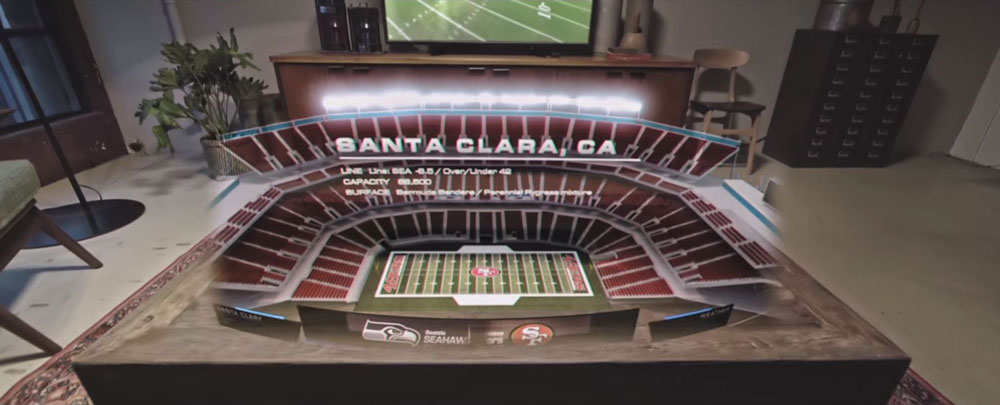Microsoft aims to bring you the ultimate NFL experience with HoloLens
Microsoft HoloLens won’t remain a gamers gimmick for long, according to a recent concept video released by the tech giant on YouTube, showing a whole new way to experience NFL games at home.
One day, Football fans may no longer need giant TV screens at home, or anywhere, to catch every moment and high-definition gameplay detail of their favorite team. Using HoloLens, NFL viewers will be able to get live, interactive feeds of a game, in the form of 3D overlays, covering entire walls of their house, or backyard, as well as every surface available, like coffee tables, floors and counters.

Some of the most exotic features of this concept, is the ability to render a holographic model of a stadium, which can be zoomed in from every angle, to get a first-person glimpse at a live game, provided by heavy-duty, low-profile cameras and sensors embedded in the players protective helmets.
The data collected in real-time by these sensors, as the video shows, could be used to display data about each player, and even predictions on the outcome of a particular action on the field, based on a player’s physical conditions, including injury reports, and other factors.
The same technology could have tremendous applications on the sidelines, as referees, coaches and players would be able to replay moments of the game, and make accurate determinations, based on a mix of holographic simulation, as well as graphical stats, collected using far more accurate telemetry than what’s currently available.

Microsoft’s plans to integrate HoloLens technology into NFL games look rather optimistic, considering that Microsoft is already in partnership with the National Football League, to supply Surface Pro tablets PCs, customized for field use, with special enclosures.
On the question of how soon this technology can be implemented, there is no easy answer, as it’s a matter of whether the NFL will be 100% on board with what could possibly be the biggest overhaul in media broadcasting, since the inception of HDTVs.
There is also the question of costs to the consumer, as Microsoft HoloLens is a device that comes with a price tag of $3000, to developers applying for the Development Edition, which will begin shipping in the first quarter of this year. With that said, HoloLens does not fall under the regular definition of a VR headset, as it is a fully untethered computer, running Microsoft Windows 10. While information on hardware specs are still scarce, sources close to HoloLens, are hinting that the CPU which will power the consumer version of HoloLens, could be a future version of Intel Atom, although any prediction for a product that won’t be available to the public until 2020, seems less than likely.